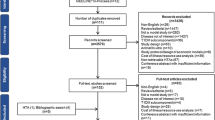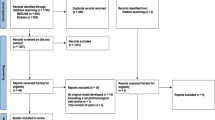Abstract
Economic analysis of healthcare interventions is increasingly reliant on decision models to estimate the long- term costs and benefits of new therapies. Models permit analysts to take short-term clinical data to forecast long-term costs and benefits. Models should follow certain basic principles and can be appraised in terms of three broad characteristics: clinical relevance, transparency and analytical ability. The purpose of this paper is to explore the role of modelling in the economic analysis of interventions for type 2 diabetes mellitus. A review of existing models for diabetes identified five complex disease models appropriate for economic analysis. These models were broadly similar in structure and in source of input parameters. However, models did vary according to the coverage of relevant disease complications and the complexity of analysis possible. Models could be enhanced by improving their transparency and by using data relevant to type 2 diabetes. In addition, enhancing clinical knowledge through the provision of long-term data on effectiveness may reduce concern relating to the appropriateness of the assumptions currently required within models. The value of such further information must be weighed against the costs of its acquisition.


Similar content being viewed by others
References
O’Brien B. Economic evaluation of pharmaceuticals: Frankenstein’s monster or vampire of trials? Med Care 1996; 34 (12 Suppl.): DS99–108
Buxton M, Drummond MF, van Hout BA, et al. Modelling in economic evaluation: an unavoidable fact of life. Health Econ 1997; 6: 217–28
Sheldon TA. Problems of using modelling in the economic evaluation of health care. Health Econ 1996; 5: 1–11
Kassirer JP, Angell J. The journal’s policy on cost-effectiveness analyses. New Engl J Med 1994; 331: 669–70
Sculpher M, Drummond M, Buxton M. The iterative use of economic evaluation as part of the process of health technology assessment. J Health Serv Res Policy 1997; 2: 26–30
Sonnenberg FA, Beck JR. Markov models in medical decision making: a practical guide. Med Dec Making 1993; 13: 322–38
Briggs A, Sculpher M. An introduction to Markov modelling for economic evaluation. Pharmacoeconomics 1998; 13: 397–409
Aronoff S, Rosenblatt S, Braithewaite S, et al. Pioglitazone hydrochloride monotherapy improves glycemic control in the treatment of patients with type 2 diabetes: a 6-month randomized placebo-controlled dose-response study. The Pioglitazone 001 Study Group. Diabetes Care 2000; 23 (11): 1605–11
Pinaire J, Robertson K, Zagar A, et al. Favourable impact of pioglitazone on lipid profile independent of baseline triglyceride in type 2 diabetes mellitus. Presented at the Endocrine Society Meeting; 2001 Jun; Denver (CO)
Einhorn D, Rendell M, Rosenzweig J, et al. Pioglitazone HCl in combination with metformin in the treatment of type 2 diabetes mellitus: a randomized placebo-controlled study. Clin Ther 2000; 22 (12): 1395–409
Kipnes MS, Krosnick A, Rendell MS, et al. Pioglitazone hydrochloride in combination with sulfonylurea therapy improves glycemic control in patients with type 2 diabetes mellitus: a randomized, placebo-controlled study. Am J Med. 2001; 111: 10–7
Gray A, Raikou M, McGuire A, et al. Cost effectiveness of an intensive blood glucose control policy in patients with type 2 diabetes: economic analysis alongside randomised controlled trial (UKPDS 41). BMJ 2000; 320: 1373–8
Commonwealth of Australia. Guidelines for the pharmaceutical industry on preparation of submissions to the Pharmaceutical Benefits Advisory Committee, including major submissions involving economic analyses. Canberra: Australian Government Publishing Press, 1995
CCOHTA Guidelines for economic evaluation of pharmaceuticals: Canada. 2nd ed. Ottawa: CCOHTA, 1997
O’Brien BJ. A tale of two (or more) cities: geographic transferability of pharmacoeconomic data. Am J Manag Care 1997; 3: S33–40
Lee KM, Coyle D, Baladi J-F. Transferring the results from economic evaluations: the use of basiliximab in transplant patients [abstract]. Value Health 2000; 3: 105
Veenstra DL, Ramsey SD, Sullivan SD. A guideline for the use of pharmacoeconomic models of diabetes treatment in the US managed-care environment. Pharmacoeconomics 2002; 20 Suppl. 1: 21–30
Henriksson F. Applications of economic models in healthcare: the introduction of pioglitazone in Sweden. Pharmacoeconomics 2002; 20 Suppl. 1: 43–53
Coyle D, Palmer AJ, Tam R. Economic evaluation of pioglitazone hydrochloride in the management of type 2 diabetes mellitus in Canada. Pharmacoeconomics 2002; 20 Suppl. 1: 31–42
Claxton K. The irrelevance of inference: a decision making approach to the stochastic evaluation of health care technologies. J Health Econ 1999; 6: 341–64
Sculpher M, Fenwick E, Claxton K. Assessing quality in decision analytic cost-effectiveness models: a suggested framework and example of application. Pharmacoeconomics 2000; 17 (5): 461–77
Briggs AH. Handling uncertainty in cost-effectiveness models. Pharmacoeconomics 2000; 17: 479–500
Briggs A, Sculpher M, Buxton M. Uncertainty in the economic evaluation of health care technologies: the role of sensitivity analysis. Health Econ 1994; 3: 95–104
Campbell IW. Epidemiology and clinical presentation of type 2 diabetes. Value Health 2000; 3: s3–6
Eastman RC, Javitt JC, Herman WH, et al. Model of complications of NIDDM. I. Model construction and assumptions. Diabetes Care 1997; 20 (5): 725–34
Eastman RC, Javitt JC, Herman WH, et al. Model of complications of NIDDM. II. Analysis of the health benefits and cost-effectiveness of treating NIDDM with the goal of normoglycemia. Diabetes Care 1997; 20: 735–44
Brown JB, Russell A, Chan W, et al. The global diabetes model: user friendly version 3.0. Diabetes Res Clin Pract 2000; 50 Suppl. 3: S15–46
Palmer AJ, Weis C, Sendi P, et al. The cost-effectiveness of different management strategies for Type I diabetes: a Swiss perspective. Diabetologia 2000; 43: 13–26
Palmer AJ, Sendi PP, Spinas GA. Applying some UK Prospective Diabetes Study results to Switzerland: the cost-effectiveness of intensive glycemic control with metformin versus conventional control in overweight patients with type 2 diabetes. Schweiz Med Wochenschr 2000; 130 (27–28): 1034–40
Vijan S, Hofer TP, Hayward RA. Estimated benefits of glycemic control in microvascular complications in Type 2 diabetes. Ann Intern Med 1997; 127: 788–95
The Diabetes Control and Complications Trial Research Group. Lifetime benefits and costs of intensive therapy as practiced in the Diabetes Control and Complications Trial. JAMA 1996; 276: 1409–15
Javitt JC. Cost savings associated with detection and treatment of diabetic eye disease. Pharmacoeconomics 1995; 8 Suppl. 1: 33–9
Eckman MH, Greenfield S, Mackey WC, et al. Foot infections in diabetic patients: decision and cost-effectiveness analyses. JAMA 1995; 273: 712–20
Humphrey LL, Ballard DJ, Frohnert PP, et al. Chronic renal failure in non-insulin dependent diabetes mellitus: a population-based study in Rochester, Minnesota. Ann Intern Med 1989; 11: 788–96
Klein R, Klein BE, Moss SE, et al. The Wisconsin Epidemiologic study of Diabetic Retinopathy. IX. Four year incidence and progression of diabetic retinopathy when age at diagnosis is less than 30 years. Arch Ophthalmol 1989; 107: 237–43
Javitt JC, Aiello LP, Bassi LJ, et al. Detecting and treating retinopathy in patients with type I diabetes mellitus: savings associated with improved implementation of current guidelines. Ophthalmology 1991; 98: 1565–73
DCCT Research Group. The absence of a glycemic threshold for the development of long-term complications: the perspective of the DCCT. Diabetes 1996; 45: 1289–98
Klein R, Klein BEK, Moss SE, et al. Glycosylated hemoglobin predicts the incidence and progression of diabetic retinopathy. JAMA 1999; 260: 2864–71
Abbot RD, Donahue RP, Kannel WB, et al. The impact of diabetes on survival following myocardial infarction in men vs women: the Framingham Study. JAMA 1988; 260: 3456–60
Wong ND, Cupples LA, Ostfeld AM, et al. Risk factors for long-term coronary prognosis following initial myocardial infarction: the Framingham Study. Am J Epidemiol 1989; 130: 469–80
Caro JJ, Klittich WS, Raggio G, et al. Economic assessment of troglitazone as an adjunct to sulfonylurea in the treatment of type 2 diabetes. Clin Ther 2000; 22 (1): 116–27
Brown JB, Palmer AJ, Bisgaard P, et al. The Mt. Hood challenge: cross-testing two diabetes simulation models. Diabetes Res Clin Pract 2000; 50 Suppl. 3: S57–64
Acknowledgements
Funding was provided by Eli Lilly Canada Inc. The authors had independent control over the contents of the manuscript.
Author information
Authors and Affiliations
Corresponding author
Rights and permissions
About this article
Cite this article
Coyle, D., Lee, K.M. & O’Brien, B.J. The Role of Models Within Economic Analysis. Pharmacoeconomics 20 (Suppl 1), 11–19 (2002). https://doi.org/10.2165/00019053-200220001-00002
Published:
Issue Date:
DOI: https://doi.org/10.2165/00019053-200220001-00002




